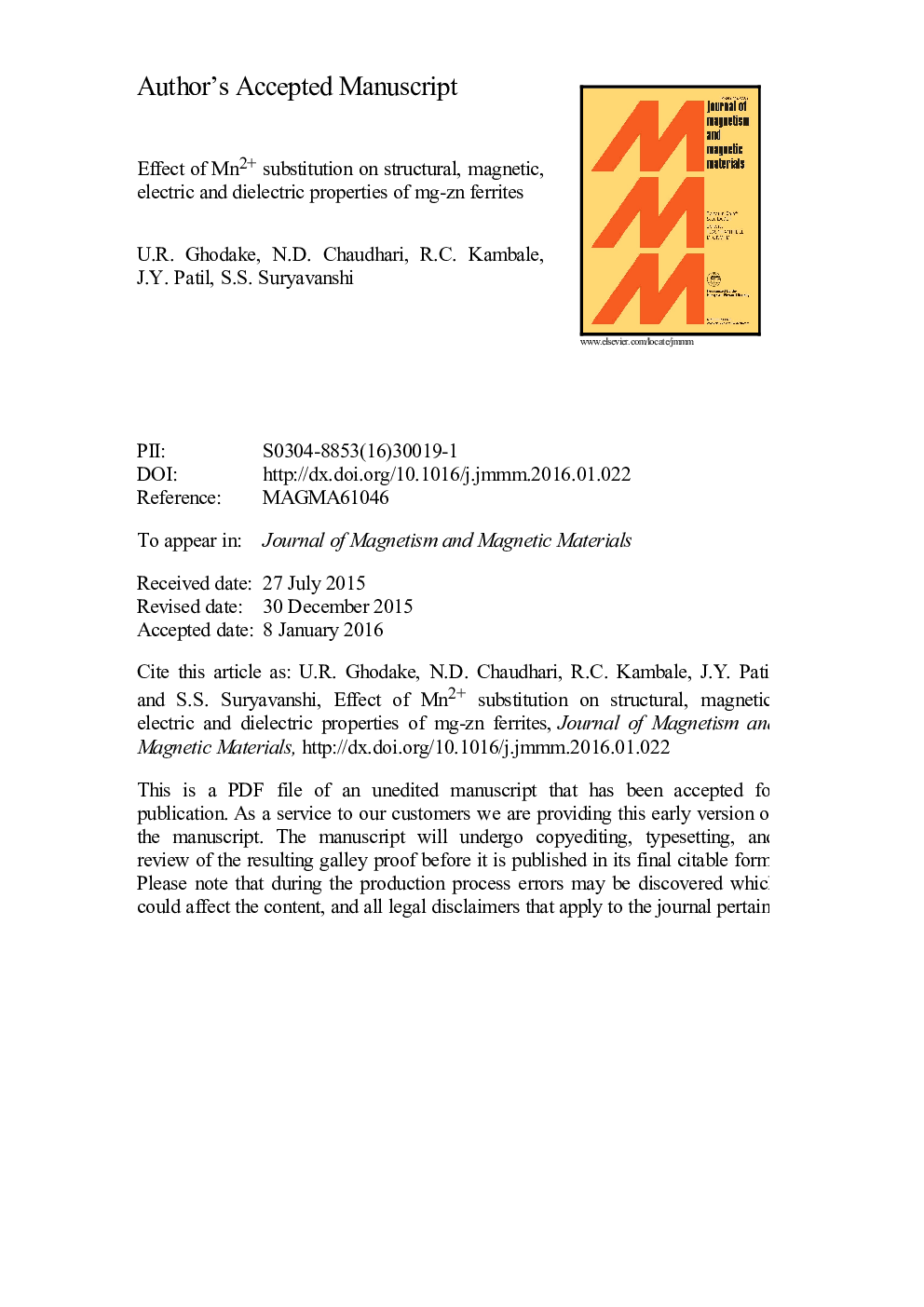| Article ID | Journal | Published Year | Pages | File Type |
|---|---|---|---|---|
| 8155045 | Journal of Magnetism and Magnetic Materials | 2016 | 36 Pages |
Abstract
In this work, Mn substituted Mg-Zn spinel ferrites having general formula Zno.4Mg0.6âxMnxFe2O4 (0â¤xâ¤0.30) have been synthesized by oxalate precursor chemical method and investigated their structural, magnetic and electric properties. X-ray diffraction (XRD) is used to study the crystal structure of synthesized materials. XRD study reveals the formation of polycrystalline cubic spinel lattice structure without any impurity phase having crystallite size in the range from 39.97 nm to 45.62 nm. Scanning electron micrographs revealed, increase in grain size (D) with increase in Mn2+ content up to x=0.10; then it decreases for x>0.10. Energy dispersive x-ray analysis (EDAX) confirms the presence of Mg2+, Mn2+, Fe3+, Zn2+ and O2â ions as per the stoichiometry. The magnetic moment (nB), with Mn2+ substitution is found to increase initially up to x=0.10 and then it deceases with further Mn2+ substitution. The observed variation in the magnetic moment (nB) is explained by considering the variation of saturation magnetization, anisotropy constant, density values and exchange interaction. The d.c. electrical resistivity decreased with increase in temperature in accordance with semiconducting behavior. Furthermore, the conductivity was found to obey the Arrhenius relation with a change in slope at critical temperature (i.e. the Curie temperature). The increase in d.c. resistivity is attributed to the hindering of Verwey mechanism between Fe2+âFe3+ ions and Mn2+âMn3+. The dielectric constant (εâ²) measurement revealed the dielectric dispersion behavior in accordance with the Maxwell-Wagner model and Koops phenomenological theory, which is responsible for conduction and polarization. The dielectric characteristics (εâ², εⳠand tan δ) exhibit dispersion due to Maxwell-Wagner type interfacial polarization. The values of dielectric constant (εâ²) and a.c. resistivity (Ïac) exhibit highest magnitude at x=0.10 and decreases further with Mn2+ substitution.
Related Topics
Physical Sciences and Engineering
Physics and Astronomy
Condensed Matter Physics
Authors
U.R. Ghodake, N.D. Chaudhari, R.C. Kambale, J.Y. Patil, S.S. Suryavanshi,
